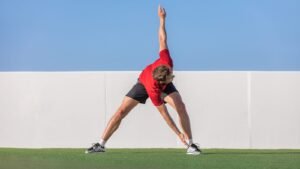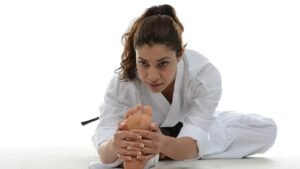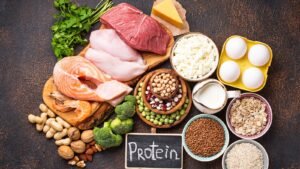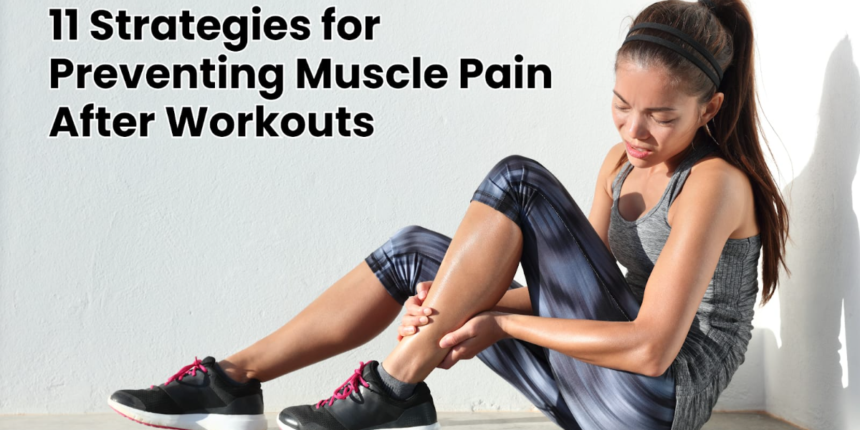Have you ever experienced muscular soreness that comes several hours or even a day after vigorous exercise, making routine activities challenging? This pain, occurring several hours after exercise, is known as Delayed Onset Muscle Soreness (DOMS) and can be both satisfying and daunting.
It is important to understand how to avoid and deal with this sort of muscle pain to keep chasing your target besides embracing the ordeals of the fitness journey. Now, let’s discuss useful approaches to optimize your activity to reduce your pain and make your exercise routines invigorating instead of harming you.
1. Warm Up Properly
A warmup is crucial to any fitness activity. It warms up your muscles and heart in readiness for the tasks that your body is to undergo. There are many benefits to warming up before stretching: it improves blood circulation in your muscles, increases flexibility, and reduces the risk of injury. Consider incorporating the following into your warmup routine:
Dynamic Stretching

Conduct active stretching which includes side-to-side leg swings, front and backward arm circles, and walking lunges. These movements help improve your flexibility and prepare the muscles that will be engaged during the workout.
Light Aerobic Exercise
Do 510 minutes of light aerobic activity, including jogging, cycling, or jumping jacks, to raise your heart rate and supply your muscles with blood.
2. Gradually Increase Intensity
Muscle cramping often results from physical exertion, especially at the beginning or when workouts are intensified. Therefore, knowing how long does steroids stay in your system is important to avoid misuse of steroids. You should consider various factors instead of rapidly working out to attain your goal.
Follow the Progressive Overload Principle
Gradually add the amount of weight that you are lifting, and the density or frequency of your workouts. This not only helps to prevent muscle soreness but also gives your muscles the time they need to rebuild and become stronger.
Listen to Your Body
Become more aware of the signals your body provides you with during and after exercising. You may feel that sharp or severe pain is a signal that you need to reduce the intensity of the exercise and give the muscles more time to rest.
3. Use Proper Technique
To avoid muscle pulling during exercise, one should ensure they use the correct form. Bad posturing can put unwanted pressure on muscles and joints throughout the body and cause aches. Consider these tips:
Learn Correct Form

Avoid exercises that strain tissues, joints, and bones. If you’re unsure about the correct techniques, ask a trainer for coaching or watch videos on proper form.
Use Mirrors
Working out in front of the mirror is especially useful because it allows for the control of body position.
Avoid Overcompensation
Make sure that you are using the right muscles that should be put to task with the particular exercise. Exercising beyond the ideal limit can result in over-compensation as well as muscle imbalances and injuries.
4. Stay Hydrated
Sweat loss causes dehydration, which slows down the recovery period of sore muscles because muscles contain high concentrations of proteins and water. Adequate hydration is essential for overall health and optimal muscle function:
Drink Water Before, During, and After Exercise
Make sure to drink enough water throughout the day, especially around your exercise sessions.
Consider Electrolytes

In the case of extended activity that requires a lot of sweating, one should consider taking a beverage with some electrolytes such as sodium, potassium, and other forgotten minerals.
5. Cool Down and Stretch
A proper cool-down routine helps your body transition from exercise to rest and can reduce muscle soreness.
Cool Down Exercise
Engage in at least 510 minutes of light aerobic exercise in the form of jogging, walking, or slow running to bring your heart rate down.
Static Stretching

Finally, perform static stretching to enhance flexibility and decrease muscle stiffness after your cooldown. Exhale as you stretch and hold each position for 15-30 seconds without bouncing.
6. Foam Rolling And Self Myofascial Release
Foam rolling and other self-myofascial release (SMR) techniques can help alleviate muscle tightness and improve recovery.
Foam Rolling
Massage your muscles with your bare hands, or use a foam roller, especially on areas that are stiff or sore. Foam rolling is a great way to encourage blood flow and get rid of tension in the muscles.
Massage Tools
You can also try using massage balls or other equipment, which are normally used to focus on certain parts of the body where tension is high.
7. Nutrition for Recovery
Proper nutrition is crucial for muscle recovery and can help reduce soreness.
Protein Intake

Pay attention to your protein intake so that your muscles are able to repair and build themselves. Sources of protein include lean meats, fish, dairy products, legumes, and plant-based protein supplements.
AntiInflammatory Foods
Include foods rich in antioxidants and anti-inflammatory effects, such as fruits, vegetables, nuts, and omega-3 fatty acid-rich fish, in your diet to aid the healing process.
Carbohydrates for Energy
Restore glycogen by taking carbohydrates in the evening after you have done your exercises. Carbohydrates from whole grains, fruits, and vegetables are healthy sources of carbohydrates.
8. Get Enough Sleep
Muscle recovery requires sleep, which is an important aspect of the life of any individual. During sleep, your body repairs and rebuilds muscle tissue:
Aim for 7-9 Hours of Sleep
Average grownups require between 7 and 9 hours of sleep, which is crucial to keeping our minds and bodies in shape.
Create a Sleep Routine

Establish a consistent sleep schedule, go to bed and wake up at the same time daily, and create a conducive sleep environment.
9. Active Recovery
Active recovery involves low-intensity exercise that promotes blood flow and reduces muscle stiffness without adding significant stress to your muscles:
Light Activities
Perform low-intensity exercises such as brisk walking, swimming, or yoga on your rest days to improve muscle circulation and aid recovery.
Gentle Stretching
Spend time on gentle stretching on active rest days so that you do not have to compromise your flexibility and muscle relaxation.
10. Heat and Cold Therapy
Alternating heat and cold therapy can help reduce muscle soreness and inflammation:
Cold Therapy
Applying ice packs or taking ice baths in the course of rigorous exercises helps to decrease inflammation and deaden sensitive muscles.
Heat Therapy
Apply heating pads, warm water baths, or hot showers to facilitate muscle relaxation and improve circulation necessary for healing.
11. Listen to Your Body
The final strategy is to always pay attention to your body’s cues and know when you have reached your limit. Everyone’s body responds differently to exercise, and what works for one person may not work for another:
Monitor Progress

This information will help you track your workouts and training sessions, determine your tolerance and any soreness you experience, and see which strategies work effectively to get you back into the swing of things.
Rest When Needed
If you find yourself swollen or tired then do not hesitate to stay off the elliptical or take it easy during your next workout session.
Supplements for Muscle Recovery
| Supplement | Description |
| Branched-Chain Amino Acids (BCAAs) | BCAAs can help minimize muscle breakdown and inflammation post-exercise. |
| Omega-3 Fatty Acids | Omega-3s possess anti-inflammatory properties, aiding in easing muscle soreness. |
| Creatine | Creatine use enhances the rate of muscle recovery and work capacity. |
Conclusion
Minimizing muscle soreness after training involves several precautions, such as appropriate stretching, graded loading, technique, adequate fluid replenishment, and recovery procedures. If you adopt all these techniques into your routine, then soreness can be reduced and the speed of muscle recovery can be increased, leading to better workouts.
You should also note that gradually and giving your body the respect it deserves in this process are the key factors in benefiting from exercising for the long term.
FAQs
1. Why is warming up important?
Warming up increases blood flow to muscles, enhances flexibility, and prepares the body for physical activity, reducing the risk of injury and muscle pain.
2. How can I prevent muscle pain before it starts?
Prevent muscle pain by warming up properly, gradually increasing workout intensity, using proper technique, staying hydrated, and incorporating a cool-down routine after exercising.
3. What causes muscle pain after workouts?
Muscle pain after workouts, commonly known as delayed onset muscle soreness (DOMS), is caused by microscopic tears in muscle fibers resulting from increased intensity or unfamiliar exercises.
Also Read: Unleashing Your Creativity with vy6ys







